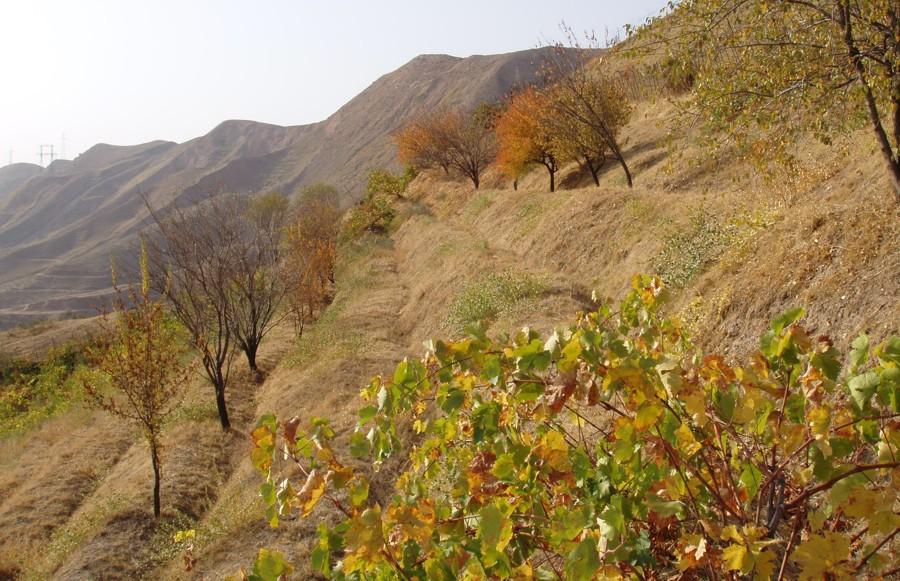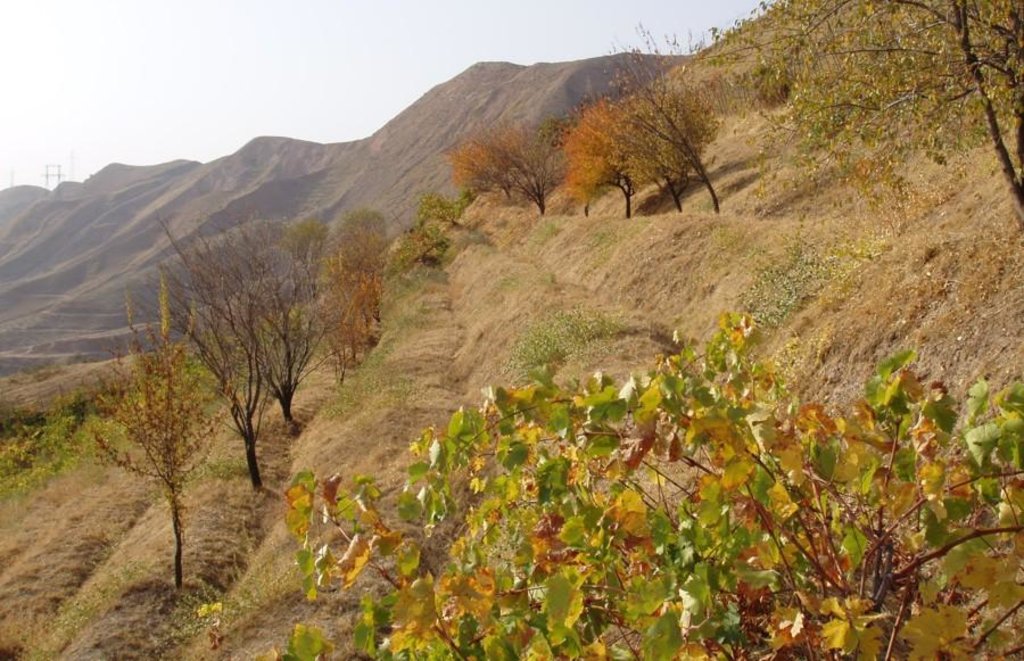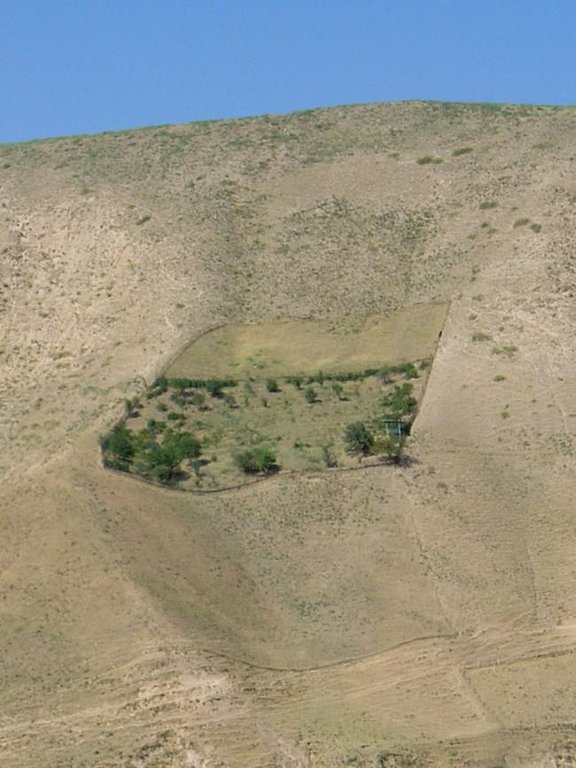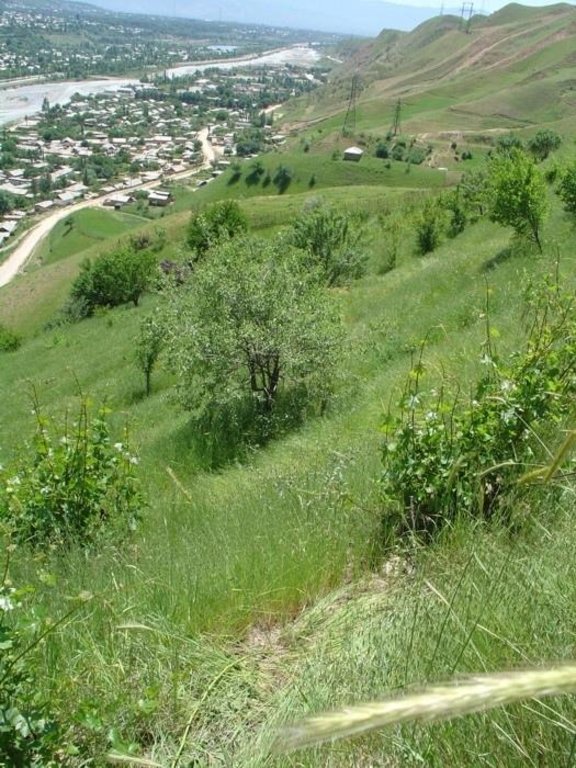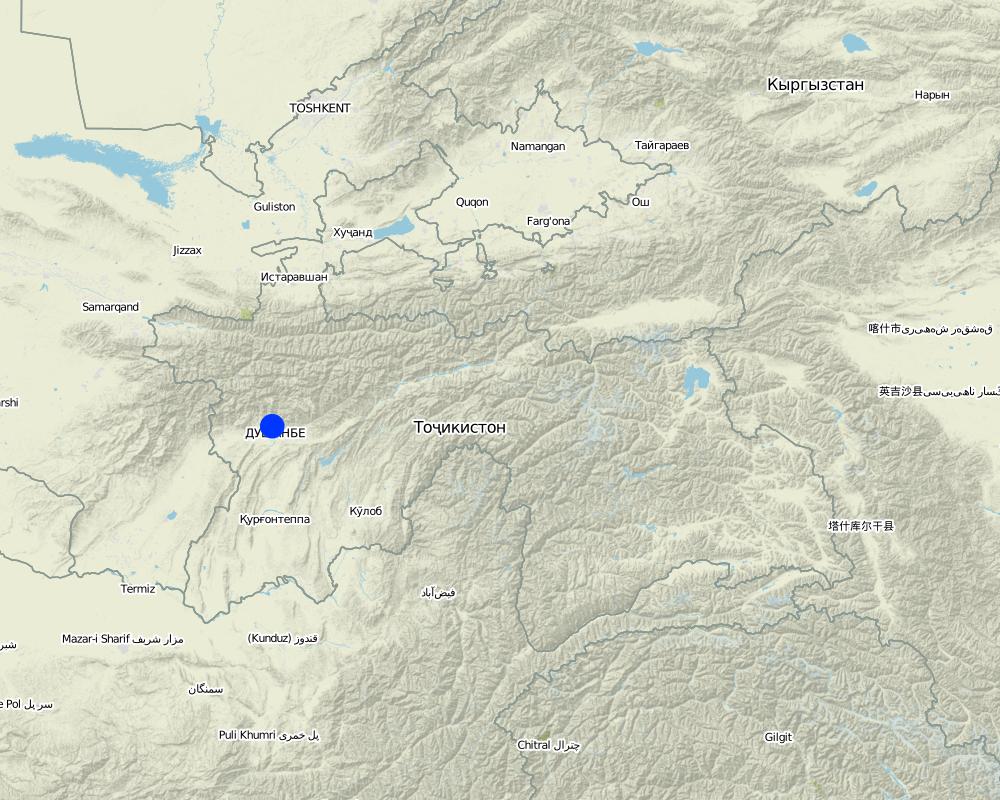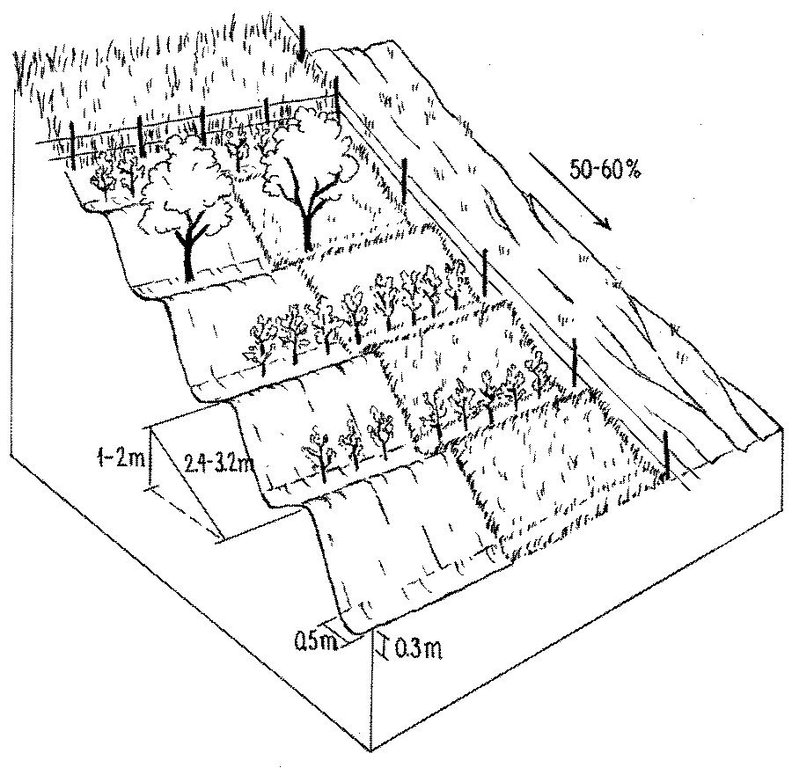Conversion of grazing land to fruit and fodder plots [طاجيكستان]
- تاريخ الإنشاء:
- تحديث:
- جامع المعلومات: Loes Masselink
- المحرر: –
- المراجعون: Alexandra Gavilano, David Streiff
technologies_977 - طاجيكستان
- Conversion of grazing land to fruit and fodder plots: 20 أغسطس، 2019 (inactive)
- Conversion of grazing land to fruit and fodder plots: 2 نوفمبر، 2021 (public)
- Conversion of grazing land to fruit and fodder plots: 4 إبريل، 2018 (inactive)
- Conversion of grazing land to fruit and fodder plots: 19 يوليو، 2017 (inactive)
- Conversion of grazing land to fruit and fodder plots: 17 يوليو، 2017 (inactive)
- Conversion of grazing land to fruit and fodder plots: 10 مارس، 2017 (inactive)
عرض الأقسام
توسيع الكل طي الكل1. معلومات عامة
1.2 تفاصيل الاتصال بالأشخاص الرئيسيين لمصدر المعلومات والمؤسسات المشاركة في تقييم وتوثيق التقنية
متخصص في الإدارة المستدامة للأراضي:
متخصص في الإدارة المستدامة للأراضي:
اسم المؤسسة (المؤسسات) التي سهلت توثيق/تقييم التقنية (إذا كان ذلك على صلة)
Soil Science Institute (Soil Science Institute) - طاجيكستاناسم المؤسسة (المؤسسات) التي سهلت توثيق/تقييم التقنية (إذا كان ذلك على صلة)
CDE Centre for Development and Environment (CDE Centre for Development and Environment) - سويسرااسم المؤسسة (المؤسسات) التي سهلت توثيق/تقييم التقنية (إذا كان ذلك على صلة)
NCCR North-South (NCCR North-South) - قرغيزستان1.3 الشروط المتعلقة باستخدام البيانات الموثقة من خلال WOCAT
متى تم تجميع البيانات (ميدانيا)؟:
01/06/2004
يوافق جامع المعلومات والشخص (لاشخاص) الرئيسي لمصدر المعلومات على الشروط المتعلقة باستخدام البيانات الموثقة من خلال WOCAT:
نعم
1.5 الإشارة إلى الاستبيان (الاستبيانات) حول مناهج الإدارة المستدامة للأراضي
2. وصف تقنيةالإدارة المستدامي للأراضي
2.1 وصف مختصر للتقنية
تعريف التقنية:
Fencing part of an overgrazed hillside, combined with terracing, manuring and supplementary irrigation for grape, fruit and grass production.
2.2 وصف تفصيلي للتقنية
الوصف:
In the Varzob valley of Tajikistan, slopes of around 30% are used communally, and are heavily overgrazed. This has led to a reduction in vegetation cover, to soil compaction, and to severe sheet and rill erosion. In 1982, one innovative land user began to set up half a hectare vineyard/fruit plot with intensive grass/fodder production for cut-and-carry and also a separate section above for hay making - by his own initiative. By the application of various conservation measures, within five years an area exposed to severe water erosion was converted into an area of sustainable use. Fodder and fruits are now flourishing and the natural resources of soil and water are conserved more effectively.
Purpose of the Technology: The start of the process was fencing of the plot to keep out animals. Scrap metal and other materials from a machinery depot were used to build a 1.5 m high fence. To harvest and hold runoff water from the hillside for grapes and fruit trees, narrow backsloping terraces were constructed, each with a water retention ditch along the contour. During the initial phase, the terraces did not harvest enough water for establishment of the seedlings. So water for supplementary irrigation was carried to the plot by donkeys in old inner tubes from car tyres. Manure is applied to the plot to improve soil fertility. The manure is collected on the high pastures where the herders graze their animals during summer. The total amount of manure applied to the plot so far amounts to about 3 t/ha over 20 years.
Establishment / maintenance activities and inputs: The establishment of such a plot is very demanding in terms of manpower. However within 5-6 years the system becomes self-sustaining and the productivity of the land is improved several times over. Following this positive experience, other households in the area have adopted the technology spontaneously, and today about 15 ha of degraded grazing land in the Varzob valley have been converted into productive fruit gardens.
Natural / human environment: For the innovator, his most valuable fruits are grapes, followed by apricots, almonds and plums. He has also successfully grown mulberry, pomegranate and cherry trees. Not all the seedlings survive: the farmer considers a 40% survival rate of grape vines to be reasonable. The fruit harvest is mainly used for home consumption. However, in a good year the table grapes and apricots are sold on the market. The hay harvest, from naturally regenerated grasses and fodder plants between the fruits amounts on average to 0.2 t/ha/year. The pruned branches from the vines are collected and used as firewood.
The establishment of such a plot is very demanding in terms of manpower. However within 5-6 years the system becomes self-sustaining and the productivity of the land is improved several times over. Following this positive experience, other households in the area have adopted the technology spontaneously, and today about 15 ha of degraded grazing land in the Varzob valley have been converted into productive fruit gardens.
2.3 صور التقنية
2.5 البلد/المنطقة/المواقع التي تم تنفيذ التقنية فيها والتي يغطيها هذا التقييم
البلد:
طاجيكستان
المنطقة/الولاية/المحافظة:
Tajikistan
مزيد من التفاصيل حول الموقع:
Varzob
Map
×2.6 تاريخ التنفيذ
في حالة عدم معرفة السنة بالتحديد، يرجى الإشارة إلى التاريخ التقريبي:
- منذ 10-50 سنة
2.7 إدخال التقنية
حدد كيف تم إدخال التقنية:
- من خلال ابتكار مستخدمي الأراضي
3. تصنيف تقنية الإدارة المستدامي للأراضي
3.1 الغرض الرئيسي ( الأغراض الرئيسية) للتقنية
- تحسين الإنتاج
- الحد من تدهور الأراضي ومنعه وعكسه
3.2 نوع (أنواع) استخدام الأراضي الحالية حيث يتم تطبيق التقنية

مختلطة (محاصيل/ رعي/ أشجار)، بما في ذلك الحراجة الزراعية
- الرعي الزراعي الحرجي
المنتجات / الخدمات الرئيسية:
major food crop: grapes, apricots,almonds, plums, mulberries
other: hay (cut-and-carry)
التعليقات:
Major land use problems (compiler’s opinion): - shortage of cultivable land on the gentle slopes next to the rivers
- low yield of natural pastures due to overgrazing
- heavy erosion taking place near residential areas
Major land use problems (land users’ perception): heavy erosion near the settlements
Future (final) land use (after implementation of SLM Technology): Mixed: Ma: Agro-silvopastoralism
إذا تغير استخدام الأراضي بسبب التقنية، قم بالإشارة إلى استخدام الأرض قبل تنفيذ التقنية:
Grazing land: Ge: Extensive grazing land
3.3 مزيد من المعلومات حول استخدام الأراضي
إمدادات المياه للأرض التي يتم تنفيذ التقنية عليها:
- ري كامل
عدد مواسم الزراعة في السنة:
- 1
حدد:
Longest growing period in days: 210Longest growing period from month to month: March-October
3.4 مجموعةالإدارة المستدامة للأراضي التي تنتمي إليها هذه التقنية
- الحراجة الزراعية
- حدائق منزلية
3.5 انتشار التقنية
التعليقات:
Total area covered by the SLM Technology is 0.15 m2.
3.6 التدابير التقنية في مجال إلادارة المستدامة للأراضي

التدابير الزراعية
- A2: المادة العضوية/خصوبة التربة

التدابير النباتية
- V1: غطاء من الأشجار والشجيرات

التدابير البنيوية
- S1: المصاطب المتدرجة

التدابير الإدارية
- M1: التغيير في نوع استخدام الأراضي
التعليقات:
Main measures: agronomic measures, vegetative measures, structural measures, management measures
Type of agronomic measures: manure / compost / residues
3.7 الأنواع الرئيسية من تدهور الأراضي التي تناولتها التقنية

تآكل التربة بالمياه
- الوزن(Wt): فقدان التربة السطحية/تآكل السطح

التدهور المادي أو الفيزيائي للتربة
- (Pc) : تراص التربة

التدهور البيولوجي
- (Bc): تناقص الغطاء النباتي
التعليقات:
Main type of degradation addressed: Wt: loss of topsoil / surface erosion, Pc: compaction, Bc: reduction of vegetation cover
Main causes of degradation: overgrazing
3.8 منع أو حد أو عكس تدهور الأراضي
تحديد هدف التقنية فيما يتعلق بتدهور الأراضي:
- اصلاح/إعادة تأهيل الأراضي المتدهورة بشدة
التعليقات:
Main goals: rehabilitation / reclamation of denuded land
4. المواصفات الفنية، وأنشطة التنفيذ، والمدخلات، والتكاليف
4.1 الرسم الفني للتقنية
4.2 المواصفات الفنية/شروحات الرسم الفني
The fenced-off agroforestry system comprising fruit trees and cereals grown on a steep hillside. Terracing is crucial for water conservation. Grass cover (right) is established for fodder production and simultaneous soil conservation. Note the adjacent plot for haymaking (above) and degraded rangeland outside the protected area (right).
Location: Varzob. Varzob, Tajikistan
Technical knowledge required for land users: moderate
Main technical functions: improvement of ground cover, increase in organic matter, increase in nutrient availability (supply, recycling,…), retain/trap dispersed runoff, increase in soil fertility
Secondary technical functions: reduction of slope angle, water harvesting / increase water supply, reduction in wind speed, retain/trap concentrated runoff (prevention of gully erosion)
Manure / compost / residues
Material/ species: manure
Remarks: 3 t per ha over 20 years
Vegetative measure: fruit trees/vines aligned
Vegetative material: T : trees / shrubs
Vertical interval between rows / strips / blocks (m): 1-2
Spacing between rows / strips / blocks (m): 2.4-3.2
Vegetative measure: Vegetative material: T : trees / shrubs
Vegetative measure: Vegetative material: T : trees / shrubs
Vegetative measure: Vegetative material: T : trees / shrubs
Trees/ shrubs species: grapes, apricot trees, almond trees, plum trees, mulberry trees, pomegranate trees, cherry trees
Slope (which determines the spacing indicated above): 16-30%
Terrace: backward sloping
Vertical interval between structures (m): 1-2
Spacing between structures (m): 2.4-3.2
Depth of ditches/pits/dams (m): 0.3
Width of ditches/pits/dams (m): 0.5
Structural measure: fence
Construction material (other): waste material, from a machinery depot
Change of land use type: from grazing land to tree crops
4.3 معلومات عامة بخصوص حساب المدخلات والتكاليف
حدد العملة المستخدمة لحساب التكاليف:
- دولار أمريكي
4.4 أنشطة التأسيس
| النشاط | نوع التدبير | التوقيت | |
|---|---|---|---|
| 1. | Planting of vines and fruit tree seedlings (apricot, plums, almonds) | نباتية | |
| 2. | 1. Fencing of an area of 0.5 ha using waste material from a machinerydepot. | بنيوية أو هيكلية | |
| 3. | 2. Construction of backward sloping bench terraces. | بنيوية أو هيكلية |
4.5 التكاليف والمدخلات اللازمة للتأسيس
| تحديد المدخلات | الوحدة | الكمية | التكاليف لكل وحدة | إجمالي التكاليف لكل مدخل | % من التكاليف التي يتحملها مستخدمو الأراضي | |
|---|---|---|---|---|---|---|
| العمالة | Planting/Fencing/Constructing | ha | 1,0 | 600,0 | 600,0 | 100,0 |
| معدات | Machine use | ha | 1,0 | 50,0 | 50,0 | 100,0 |
| معدات | Animal traction | ha | 1,0 | 200,0 | 200,0 | 100,0 |
| المواد النباتية | seedlings | ha | 1,0 | 40,0 | 40,0 | 99,0 |
| المواد النباتية | grape vines | ha | 1,0 | 1500,0 | 1500,0 | 100,0 |
| الأسمدة والمبيدات الحيوية | manure | ha | 1,0 | 300,0 | 300,0 | 100,0 |
| إجمالي تكاليف إنشاء التقنية | 2690,0 | |||||
التعليقات:
Duration of establishment phase: 72 month(s)
4.6 الصيانة/الأنشطة المتكررة
| النشاط | نوع التدبير | التوقيت/الوتيرة | |
|---|---|---|---|
| 1. | Irrigation (old inner tubes filled with water carried to the plot by donkeys). In summer: 5 litres of water per tree, per week. | زراعية | first 5–6 years |
| 2. | Irrigation (old inner tubes filled with water carried to the plot by donkeys). In summer: 5 litres of water per tree, per week. | زراعية | first 5–6 years |
| 3. | Manuring: applied at first to the newly planted vines/trees only,with restricted availability. During the second half of the establishment phase also applied elsewhere within the plot | زراعية | |
| 4. | Manuring: applied at first to the newly planted vines/trees only,with restricted availability. During the second half of the establishment phase also applied elsewhere within the plot | زراعية | |
| 5. | Irrigation of new seedlings. | زراعية | |
| 6. | Harvesting of fruits and fodder: transport of the yield to the house by donkey | زراعية | |
| 7. | Manuring, when replacing grapes or trees that had died. | زراعية | every year |
| 8. | Vines and trees that fail are replaced. | نباتية | |
| 9. | Grapes and trees pruned | نباتية | every year. |
| 10. | 1. Repairs to the fence | بنيوية أو هيكلية | every year |
4.7 التكاليف والمدخلات اللازمة للصيانة/للأنشطة المتكررة (سنويًا)
| تحديد المدخلات | الوحدة | الكمية | التكاليف لكل وحدة | إجمالي التكاليف لكل مدخل | % من التكاليف التي يتحملها مستخدمو الأراضي | |
|---|---|---|---|---|---|---|
| العمالة | Irrigation/manuring/keeping in good repair | ha | 1,0 | 180,0 | 180,0 | 100,0 |
| معدات | Animal traction | ha | 1,0 | 200,0 | 200,0 | 100,0 |
| المواد النباتية | Seedlings | ha | 1,0 | 20,0 | 20,0 | 100,0 |
| المواد النباتية | Grape vines (replacment) | ha | 1,0 | 150,0 | 150,0 | 100,0 |
| الأسمدة والمبيدات الحيوية | manure | ha | 1,0 | 20,0 | 20,0 | 100,0 |
| إجمالي تكاليف صيانة التقنية | 570,0 | |||||
التعليقات:
Labour cost per day is US$2. The fence constructed by the farmer was free because he utilised scrap from a machinery depot. Note that the total length of fencing is relatively less for a larger plot. In the villages, almost no money changes hands: there is a barter system between the farmers. Even salaries are often paid in terms of fruits, wood or free rent of land.
5. البيئة الطبيعية والبشرية
5.1 المناخ
هطول الأمطار السنوي
- < 250 مم
- 251- 500 ملم
- 501 - 750ملم
- 1,000-751 ملم
- 1,500-1,100 ملم
- 2,000-1,500 ملم
- 3,000-2,001 ملم
- 4,000-3,100 ملم
- > 4000 ملم
المنطقة المناخية الزراعية
- شبه رطبة
Thermal climate class: temperate
5.2 طوبوغرافيا
متوسط الانحدارات:
- مسطح (0-2%)
- بسيط (3-5%)
- معتدل (6-10%)
- متدحرج (11-15%)
- تلال (16-30%)
- شديدة الانحدار(31-60%)
- فائقة الانحدار (>60%)
التضاريس:
- هضاب/سهول
- أثلام مرتفعة
- المنحدرات الجبلية
- منحدرات التلال
- منحدرات في السفوح
- قاع الوادي
المنطقة الارتفاعية:
- 100-0 متر فوق سطح البحر
- 500-101 متر فوق سطح البحر
- 1,000-501 متر فوق سطح البحر
- 1,500-1,001 متر فوق سطح البحر
- 2,000-1,501 متر فوق سطح البحر
- 2,500-2,100 متر فوق سطح البحر
- 3,000-2,501 متر فوق سطح البحر
- 4,000-3,001 متر فوق سطح البحر
- > 4000 متر فوق سطح البحر
5.3 التربة
متوسط عمق التربة:
- ضحل جدًا (0-20 سم)
- ضحلة (21-50 سم)
- متوسطة العمق (51-80 سم)
- عميقة (81-120 سم)
- عميقة جدًا (> 120 سم)
قوام التربة (التربة السطحية):
- متوسط ( طميي، سلتي)
المواد العضوية في التربة السطحية:
- منخفضة (<1%)
إذا كان متاحًا، قم بإرفاق وصف كامل للتربة أو تحديد المعلومات المتوفرة، على سبيل المثال نوع التربة، الرقم الهيدروجيني/ درجة حموضة التربة، قدرة التبادل الكاتيوني، النيتروجين، الملوحة وما إلى ذلك.
Soil fertility: low - medium
Soil drainage / infiltration: good
5.6 خصائص مستخدمي الأراضي الذين يطبقون التقنية
التوجه السوقي لنظام الإنتاج:
- الكفاف (الإمداد الذاتي)
- تجاري/سوق
الدخل من خارج المزرعة:
- 10-50% من جميع الإيرادات
مستوى المكننة:
- عمل يدوي
اذكر الخصائص الأخرى ذات الصلة لمستخدمي الأراضي:
Off-farm income specification: 50% of the families' total income comes from three sons working in Moscow
Market orientation of production system commercial/ market: apricots sold on the market, in good years
5.7 متوسط مساحة الأرض المملوكة أو المستأجرة من قبل مستخدمي الأراضي الذين يطبقون التقنية
- < 0.5 هكتارا
- 0.5 - 1 هكتار
- 1 -2 هكتار
- 2 - 5 هكتار
- 5 - 15 هكتار
- 15 - 50 هكتار
- 50 - 100هكتار
- 500-100 هكتار
- 1,000-500 هكتار
- 10,000-1,000 هكتار
- > 10,000 هكتار
هل يعتبر هذا نطاقًا صغيرًا أو متوسطًا أو واسعا (في إشارة إلى السياق المحلي)؟:
- على نطاق صغير
5.8 ملكية الأراضي، وحقوق استخدام الأراضي، وحقوق استخدام المياه
ملكية الارض:
- دولة
حقوق استخدام الأراضي:
- مجتمعي (منظم)
- فردي
6. الآثار والتصريحات الختامية
6.1 الآثار التي أظهرتها التقنية في الموقع
الآثار الاجتماعية والاقتصادية
الإنتاج
جودة العلف
إنتاج الخشب
الدخل والتكاليف
النفقات على المدخلات الزراعية
التعليقات/ حدد:
for manure application
دخل المزرعة
عبء العمل
التعليقات/ حدد:
high labour input needed for establishment and recurrent irrigation
آثار اجتماعية واقتصادية أخرى
fruit production
الآثار الاجتماعية والثقافية
المؤسسات المجتمعية
التعليقات/ حدد:
terrace construction requires collaboration with relatives and friend
المعرفة بالإدارة المستدامة للأراضي/تدهور الأراضي
التخفيف من حدة الصراع
التعليقات/ حدد:
in the beginning conflicts due to jealousy, loss of community grazing land and fear of landslides caused by water retention on sloping loess areas
الآثار الايكولوجية
دورة المياه / الجريان السطحي
تصريف المياه الزائدة
التربة
رطوبة التربة
غطاء التربة
فقدان التربة
التعليقات/ حدد:
poorly maintained terraces may lead to increased erosion (medium (20-50%))
الآثار الايكولوجية الأخرى
soil fertility
biodiversity
6.2 الآثار التي أظهرتها التقنية خارج الموقع
الرواسب المنقولة بواسطة الرياح
flooding of the road at the bottom of the slope
التعليقات/ حدد:
conserved area is too small to have significant impact
risk of landslides due to water harvesting
6.4 تحليل التكلفة والعائد
كيف يمكن مقارنة العوائد نسبة لتكاليف الإنشاء (من وجهة نظر مستخدمي الأراضي)؟
عوائد قصيرة الأجل:
سلبي
عوائد طويلة الأجل:
إيجابي
كيف تتم مقارنة العوائدمع كلفة الصيانة/التكاليف المتكررة (من وجهة نظر مستخدمي الأراضي)؟
عوائد قصيرة الأجل:
سلبي
عوائد طويلة الأجل:
ايجابي جدا
6.5 اعتماد التقنية
- حالات فردية/تجريبية
إذا كان متاحًا، قم بتحديد الكمية (عدد الأسر المعيشية و/أو المساحةالمغطاة):
5 households in an area of 15 ha
من بين جميع الذين تبنوا التقنية، كم عدد الذين فعلوا ذلك بشكل تلقائي، أي دون تلقي أي حوافز مادية/مدفوعات؟:
- 100-90%
التعليقات:
100% of land user families have adopted the Technology without any external material support
5 land user families have adopted the Technology without any external material support
There is a moderate trend towards spontaneous adoption of the Technology
Comments on adoption trend: Adoption was spontaneous in all cases and there are signs of further spread.
6.7 نقاط القوة / المزايا / الفرص التي توفرها التقنية
| نقاط القوة/ المزايا/ الفرص من وجهة نظر جامع المعلومات أو غيره من الاشخاص الرئيسيين لمصدر المعلومات |
|---|
|
Rehabilitation of degraded areas: reduced soil erosion and increased productivity How can they be sustained / enhanced? Complement manure inputs by using other fertilisers. |
|
Production increase: good fruit yields How can they be sustained / enhanced? Introduce low input demanding crops |
|
Diversification: different kinds of fruit trees growing on the plot How can they be sustained / enhanced? Other trees (nuts for example) and annual crops such as wheat might also be suitable for this area. |
| Income generation. |
|
Where open access communal grazing leads to land degradation, individuals sometimes enclose land for productive purposes. This positive example is from Tajikistan where the initiative began during the period of the soviet regime. Similar initiatives can be seen in western Iran. However, if a significant number of land users follow suit, there will be a reduction in the amount of land available for common use. 2.6.11: Level of technical knowledge required: land user: partly moderate (construction of terraces) and partly low (simple knowledge of agronomy, manure application, harvesting etc) |
6.8 نقاط ضعف / مساوىء / مخاطر التقنية وسبل التغلب عليها
| نقاط الضعف/ المساوىء/ المخاطر من وجهة نظر جامع المعلومات أو غيره من الاشخاص الرئيسيين لمصدر المعلومات | كيف يمكن التغلب عليها؟ |
|---|---|
| Bringing water for supplementary irrigation to the orchard is very labour intensive | An irrigation supply system could be installed (irrigation channels, water tank). But so far this is too expensive, and it is questionable whether irrigation could be installed and maintained sustainably |
| Not all tree species can grow in these dry conditions (for example apple trees will not survive without regular irrigation or watering) | irrigation water required (see above). |
| Difficulty in establishment of the young vines in the well developed grass | Remove or cut down grass and herbaceous plants around the vines at least until they have been well established. |
| Generally high manual labour input | Difficult to reduce labour inputs. |
7. المراجع والروابط
7.3 روابط للمعلومات ذات الصلة المتوفرة على الإنترنت
العنوان/الوصف:
Loes Masselink. 2012. Monitoring SLM Practices in Tajikistan. BSc thesis, Land Degradation and Development Group, International Land and Water Management at Wageningen University. The Netherlands.
عنوان الرابط URL:
https://www.wocat.net/fileadmin/user_upload/documents/Theses/Masselink2012.pdf
الروابط والوحدات المواضيعية
توسيع الكل طي الكلالروابط
لا يوجد روابط
الوحدات المواضيعية
لا يوجد وحدات مواضيعية


